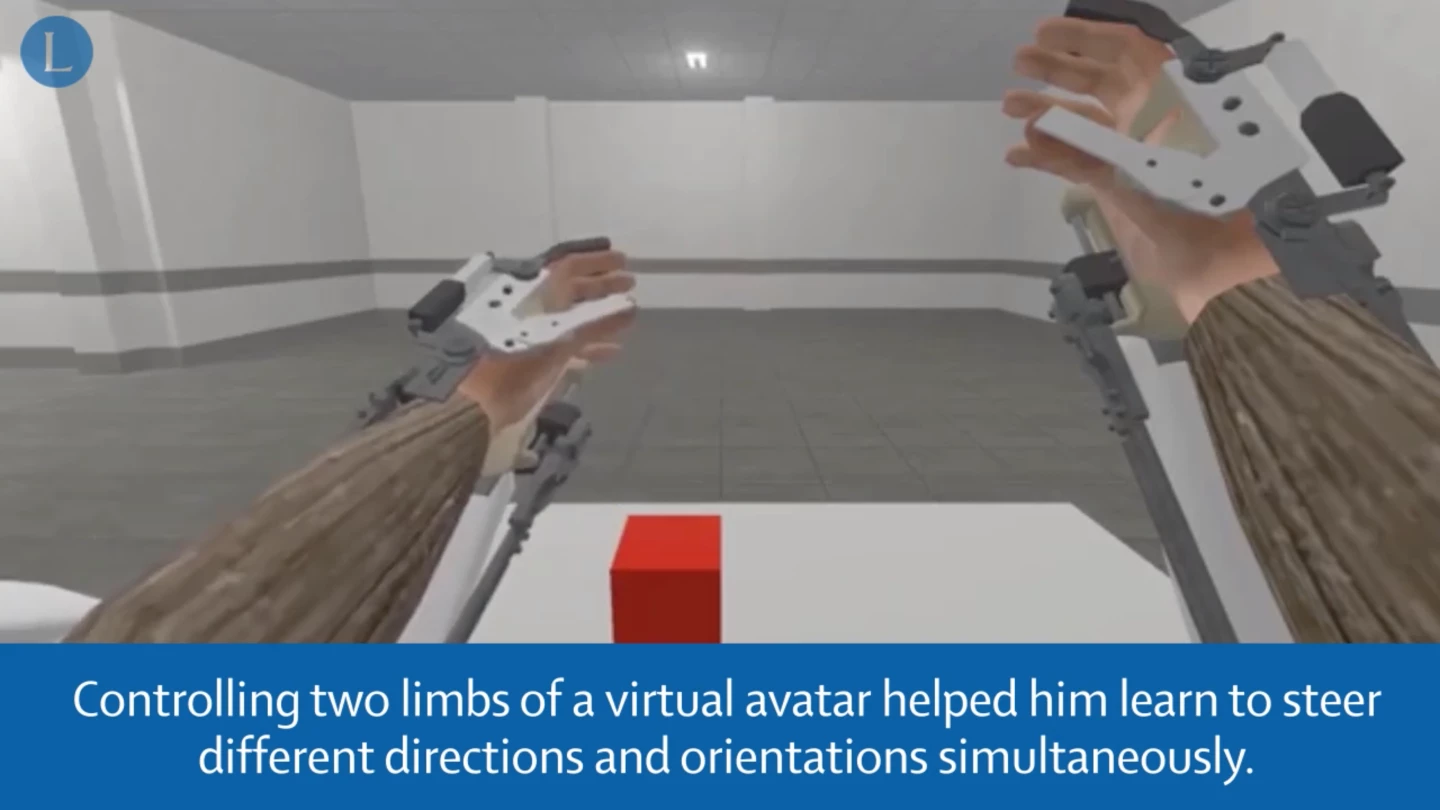Scientists from the University of Grenoble have spent two years teaching a quadriplegic man to move his arms and legs, and even walk, using a brain-controlled AI exoskeleton. The 28-year-old patient, who had suffered from a cervical spinal cord injury that left him paralyzed from the shoulders down, came into the study with the ability to move only his biceps and right wrist, enabling him to use a joystick-controlled wheelchair.
The researchers implanted a 64-electrode sensor on each side of his head, between the brain and skin, with the ability to read brain activity in the sensorimotor cortex and transmit them. Then, they began training the patient to move virtual limbs and videogame sprites, using deep learning AI to identify, learn and reinforce the brain activity the patient was using for each motion and command.
The patient first learned to achieve simple tasks, like turning a switch on and off, and progressed to moving a pong-style paddle left and right on screen. He then eventually began to practice muscle motions on virtual limbs while wearing a VR headset, and these motions began to increase in complexity.

Then it was time to take the exoskeleton for a drive. With 14 different joints, offering 14 different degrees of freedom of movement, it offered the patient the ability to move his own arms and legs. In one exercise, he was able to reach out and touch targets on cubes with both hands, moving his arms with eight degrees of freedom and correctly rotating his wrists. He demonstrated a 71-percent success rate on these tests.
In another test, the patient used the exoskeleton to walk forward – but the brain command for this was a simple start/stop switch rather than a more complex set of muscle and limb movements. Still, he managed to cover a total of 145 meters (476 ft) with 480 steps over 39 sessions, with the exoskeleton tethered to the roof to prevent falls.
The patient "considers his rapidly increasing prosthetic mobility to be rewarding," according to Prof. Alim-Louis Benabid, President of the Clinatec Executive Board, a CEA laboratory, and Professor Emeritus from the University of Grenoble, "but his progress has not changed his clinical status."
Brain-machine interfaces remain fairly crude at this stage, and electrical signals coming out of the sensorimotor cortex are difficult to decipher, even with invasive implants. What's more, although this system proved more robust than many previous efforts, it still required recalibration at least once every seven weeks. Deep learning AI will likely prove to be an invaluable tool to find patterns in the barrage of data coming out of brain-scanning devices, and companies like Elon Musk's Neuralink claim to be developing devices that can read brain activity data with much greater acuity than current technology, to improve results further.
The research team is continuing its work with the exoskeleton, both with the original patient and with three others. The next goal is to give patients the ability to "walk and balance autonomously without using a ceiling suspension system."
Professor Tom Shakespeare from the London School of Hygiene and Tropical Medicine, UK, provided some perspective on this work: “An originality of this study is showing the control of four limbs, whereas in most previous studies only one limb was controlled. However, autonomous walking with equilibrium is not so far possible. Although this study presents a welcome and exciting advance, we must remember that proof of concept is a long way from usable clinical possibility. A danger of hype always exists in this field. Even if ever workable, cost constraints mean that high-tech options are never going to be available to most people in the world with spinal cord injury. One analysis suggests that only 15 percent of the world’s disabled population have access to the wheelchairs or other assistive technologies that they need.”
Still, it's super fascinating to watch a physical manifestation of a brain-machine interface at this early stage of a game that will eventually lead to full, natural control of prosthetic limbs and exoskeletons – and even cybernetic enhancements.
The team's study appears in The Lancet Neurology, and the video below provides an overview of the research.
Source: The Lancet via Scimex






